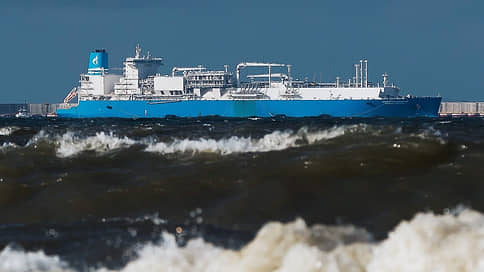Gazprom has added Baltic gas to Southern Europe
[ad_1]

Gazprom’s first LNG plant built from scratch, Port LNG in the Baltic, was forced to radically reconsider its marketing strategy in its first year of operation. Although sales were initially focused on North-Western Europe, the situation in Ukraine forced the redirection of cargo to Turkey and Greece. The plant does not have long-term contracts and supplies cargo only to the spot market. Gazprom also began testing the economics of supplies to China: the second cargo from Portovaya is already going to Asia, but not along the Northern Sea Route, but through Suez. According to analysts, Gazprom is unlikely to be able to gain a foothold in the Greek market due to the EU’s position on Russian gas, and the economics of supplies to China are not yet optimal due to the long leverage.
Greece and Turkey have become the main markets for Russian LNG produced during the first year of operation at Gazprom’s Portovaya LNG plant, according to Kpler data. The LNG plant does not have long-term contracts with consumers, so all shipments are sold on the spot market. Thus, since September last year, 0.59 million tons of LNG (seven cargoes) were supplied to Greece, 0.67 million tons of LNG (seven cargoes) to Turkey, and another cargo went to Brazil in August.
In addition, in September, for the first time, a batch of LNG from the plant was shipped to China, the cargo went through the Northern Sea Route. Now another tanker, La Perouse, is presumably heading to China, but through the Suez Canal: the ship’s GPS tag is designated “Yellow Sea for orders.”
Minor volumes – about 0.087 million tons – went to Ust-Luga, where they are transshipped to another tanker on a board-to-board basis for further deliveries to Kaliningrad. Such supplies have no commercial benefit, since Gazprom supplies Kaliningrad with cheap pipeline gas through Lithuania.
The Portovaya project, with a capacity of 1.5 million tons in the Baltic, was launched in September 2022 and was originally intended for supplies to Europe. But after the outbreak of hostilities in Ukraine, EU countries are trying to reduce their dependence on Russian energy resources. Finland, the Baltic countries, Poland and the UK announced they would stop purchasing Russian LNG, which, however, is not yet under pan-European sanctions.
In the long term, it is unlikely that Gazprom will be able to gain a foothold in the Greek market, since the EU is moving towards a ban on Russian LNG supplies, at least on a spot basis, says Victor Katona from Kpler. “That’s why, apparently, the option with China is being explored, which at the moment is far from optimal: tankers waste too much time returning from there in ballast,” he believes.
Gazprom told Kommersant that the company sells LNG batches in accordance with the plant’s production program and concluded commercial contracts: “The company considers the first delivery of its own LNG batch along the Northern Sea Route to China to be successful.”
The Portovaya LNG plant was built on the basis of a compressor station of the same name, which previously supplied gas to the exploded Nord Stream gas pipeline. The plant currently consists of two liquefaction lines using Linde technology, an onshore LNG storage tank with a capacity of 42 thousand cubic meters and a floating storage facility with a capacity of 135 thousand cubic meters. In September last year it was reported that the project could be expanded by another 2 million tons. Gazprom reported on October 12 that since September last year, about 1.4 million tons of LNG have been shipped to consumers.
As independent expert Alexander Sobko notes, spot prices for LNG are now close not only within one region, but also in total across Eurasia. “Deliveries specifically to Turkey and Greece, although they lead to longer transportation compared to the countries of North-West Europe, are probably associated with political aspects,” he explains.
According to Ivan Timonin from Implement, taking into account the current price level, supplies to all existing markets are profitable for the manufacturer: on average, in 2022, prices for spot LNG in Europe amounted to about $40.3 per MMBtu (about $1.4 thousand per thousand cubic meters), in 2023 – $13.1 per MMBtu ($470 per thousand cubic meters), in Asia – $34.4 and $13.7 per MMBtu, respectively. At the same time, the analyst clarifies, the cost of supplies from Port LNG, taking into account production and transportation to the southern part of Europe, is about $5.4 per MMBtu.
[ad_2]
Source link





